
Fresh Inspiration: Gochujang Roasted Albacore and Fried Rice
I don't know about you, but this is the way it goes at our house: I'm browsing through recipes online or reading an article about our local fisheries—it is, after all, part of my job—and I think, "Gosh darn it, we need to have more fish in our diet."
Then I close the window or finish the article and forget about it.
But this summer we've invested in a CSA subscription from Stoneboat Farm, which means I will be picking up our share every Saturday morning for 23 weeks at its booth at the Hollywood Farmers Market. And that just happens to be across the aisle from the beautiful display at Linda Brand Crab which, in addition to the eponymous crab in its name, usually has a plethora of other local, fresh-out-of-the-water fish and shellfish on offer.

After I picked up our share this past weekend, I glanced across the aisle and noticed some beautiful rosy albacore tuna loins for a very reasonable price. So I picked up a small-ish, three-quarter pound piece and stashed it in the shopping bag with my vegetables, figuring I'd come up with something for dinner that night.
As usual the afternoon got involved, this time with a trip to the garden store for compost, digging it in to amend the dead soil in our raised beds, planting the tomatoes, peppers and ground cherries from Alice at Log House Plants, and suddenly the clock somehow said it was time to make dinner.
Oops. The albacore!
A quick scan of the veg bin—this is where a CSA really comes in handy—made the decision a snap, and with my homemade gochujang and other staples at the ready, I came up with a simple and, it turned out, incredibly delicious solution. Not just a terrific way to supplement a vegetable stir fry, this roasted fish would be great to use with any firm-fleshed fish as a main course with rice and salad, or sliced into cubes it would make a terrific appetizer right out of the oven (or off the grill) this summer.
Plus it makes it easy to fulfill that pledge to include more fish on our table!
Gochujang Roasted Albacore with Vegetable Fried Rice
For the marinade:
3/4 lb. albacore loin, sliced in 1" thick sections
3 garlic cloves, finely minced or pressed in a garlic press
2 Tbsp. gochujang
1 Tbsp. miso (I'm addicted to locally made Jorinji miso)
1 1/2 tsp. brown sugar
1 Tbsp. water to thin
For the fried rice:
4 c. leftover cooked rice*
4 c. vegetables, chopped in bite-sized pieces (I used cabbage, carrots and zucchini)
2 Tbsp. vegetable oil
1 onion, chopped in 1/4-inch dice
3 garlic cloves, minced
1 Tbsp. ginger, peeled and grated
2 Tbsp. gochujang
2 Tbsp. miso
1 Tbsp. fish sauce
1Tbsp. toasted sesame oil
1 bunch green onions, sliced into 1" lengths
1/2 tsp. red pepper flakes (optional)
1 Tbsp. toasted sesame seeds (optional)
Preheat oven to 400°.
Place a sheet of parchment paper in a roasting pan.
Chop vegetables for stir fry.
In a small mixing bowl, stir together the marinade ingredients. Thickly coat each piece of fish in the marinade mixture and place them on the parchment paper in the roasting pan. Reserve any remaining marinade for the fried rice.
Place roasting pan in oven, roasting for 10 minutes. Remove from oven and set aside while you cook the fried rice.
In a deep sauté pan, heat the oil over medium-high heat until it shimmers. Add the chopped onions and sauté until it starts to become translucent. Add the ginger and garlic to the onions and sauté briefly, then add the gochujang, miso and any remaining gochujang marinade and cook for 1 minute, stirring to keep it from sticking.
Add vegetables starting with the ones that take the longest to cook (like carrots, then zucchini and cabbage) and sauté until crisp-tender. Add pepper flakes, fish sauce, sesame oil and green onions and heat briefly, then add cooked rice.* Cook for at least 5-10 minutes to heat the rice, then season to taste with more fish sauce, miso or sesame oil if it seems bland.
Cut the roasted fish into 1" pieces and place on top of the fried rice. Serve, sprinkling with toasted sesame seeds if desired.
* It's not necessary to have cooked rice on hand—I've made rice just beforehand with no problem. If you need to cook rice, bring 4 c. water to a boil and then add 2 cups long grain or jasmine rice. When it returns to a boil, turn down the heat to low and cook until all the liquid has been absorbed, about 20 minutes. You can cool the rice at this point, or use it hot.


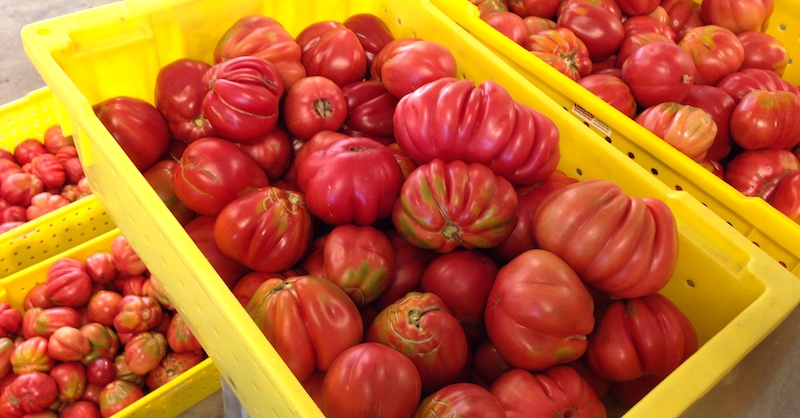
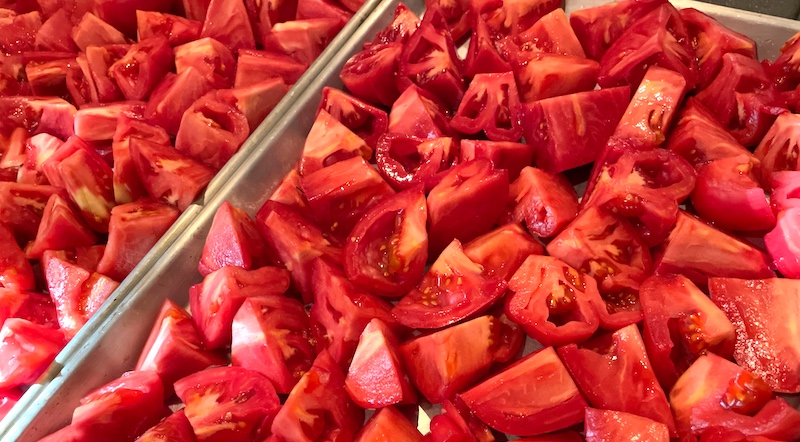


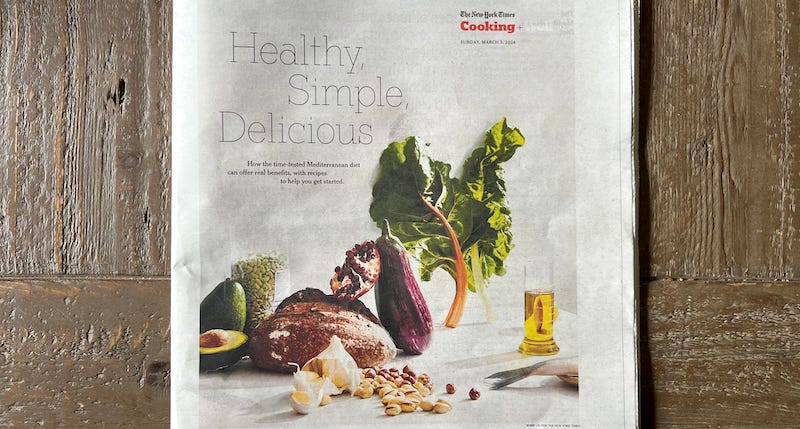
 Nguyen, who was born in Vietnam, won a James Beard Foundation Award for Best Cookbook in 2018 for
Nguyen, who was born in Vietnam, won a James Beard Foundation Award for Best Cookbook in 2018 for  A photo the Times used as an illustration (above) is just one example. "The cultural takeover is strong," Nguyen wrote. "For example, this stock photo of a 'Mediterranean diet' includes avocado, tomato, and what looks like a knob of ginger. And, is that turmeric in the lower left?"
A photo the Times used as an illustration (above) is just one example. "The cultural takeover is strong," Nguyen wrote. "For example, this stock photo of a 'Mediterranean diet' includes avocado, tomato, and what looks like a knob of ginger. And, is that turmeric in the lower left?"





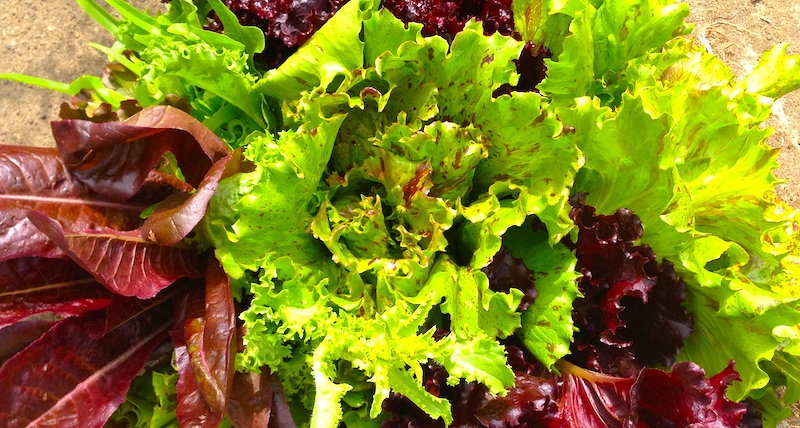


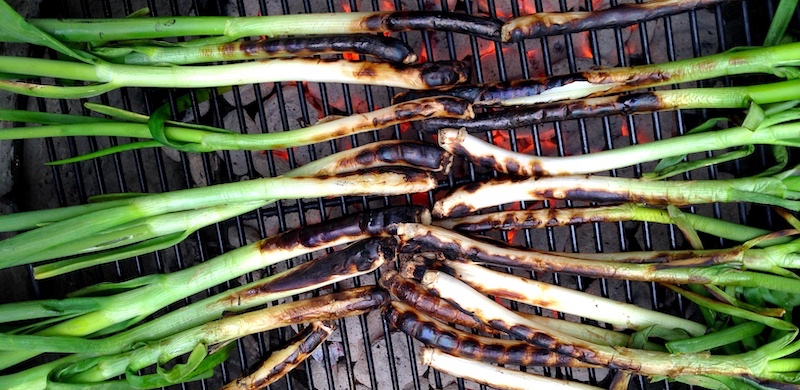
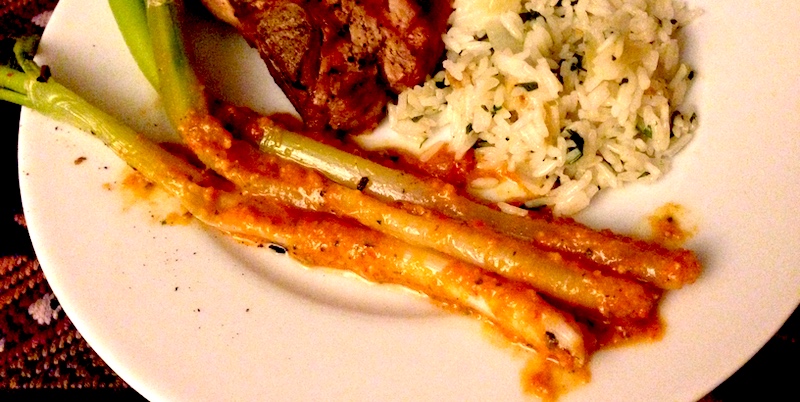 Cooked on a hot grill until the outside layer is blackened but not charred and the inside is soft and creamy, the blackened outside layer is peeled off and the remaining onion is dunked in a tangy romesco-like sauce called salbitxada (sahl-beet-SHAH-dah). Then, holding the onion aloft by the greens, the trick is to lower the soft, saucy white part into your mouth and bite it off without having the sauce dribble all over your face. (
Cooked on a hot grill until the outside layer is blackened but not charred and the inside is soft and creamy, the blackened outside layer is peeled off and the remaining onion is dunked in a tangy romesco-like sauce called salbitxada (sahl-beet-SHAH-dah). Then, holding the onion aloft by the greens, the trick is to lower the soft, saucy white part into your mouth and bite it off without having the sauce dribble all over your face. (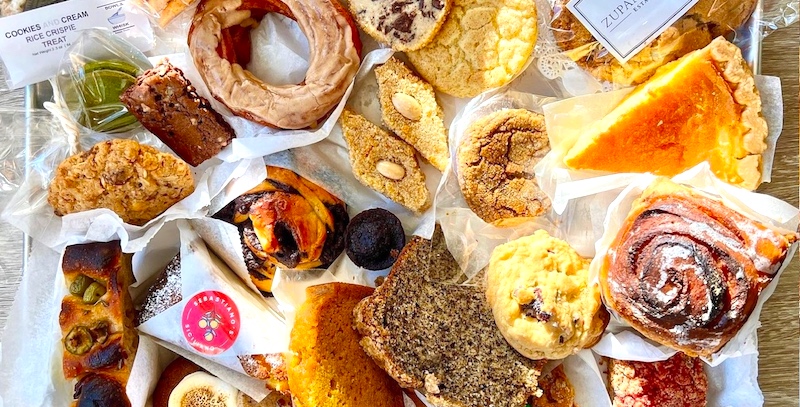

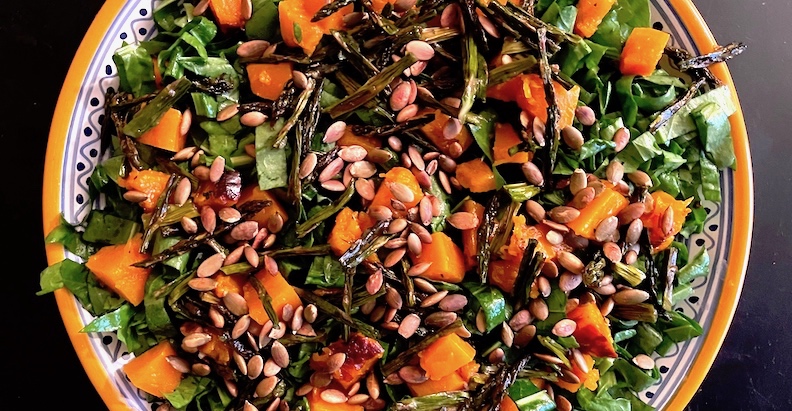
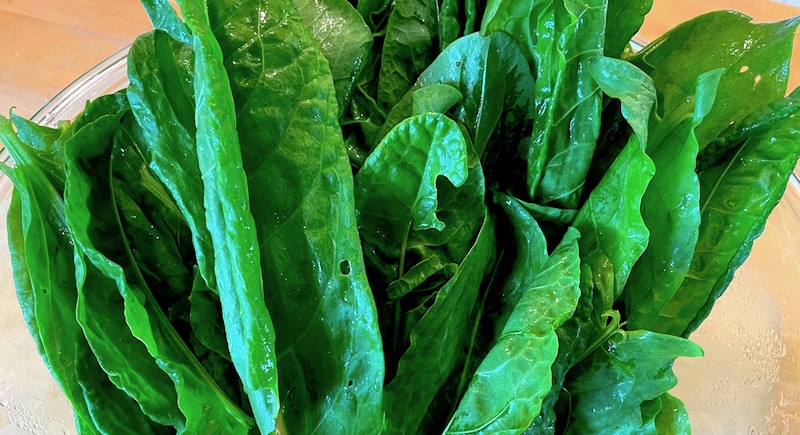 Chopping a few leaves into a salad was okay, but adding much more than four or five leaves, and their tangy, citrus-y bite overwhelmed the pleasant sweetness of the other greens. A pesto using half sorrel and half of another herb like spinach or parsley or basil worked, pepping up its flavor and giving it a lively greenness. But any of the above only used a smidgen of what the prolific plants were producing.
Chopping a few leaves into a salad was okay, but adding much more than four or five leaves, and their tangy, citrus-y bite overwhelmed the pleasant sweetness of the other greens. A pesto using half sorrel and half of another herb like spinach or parsley or basil worked, pepping up its flavor and giving it a lively greenness. But any of the above only used a smidgen of what the prolific plants were producing.